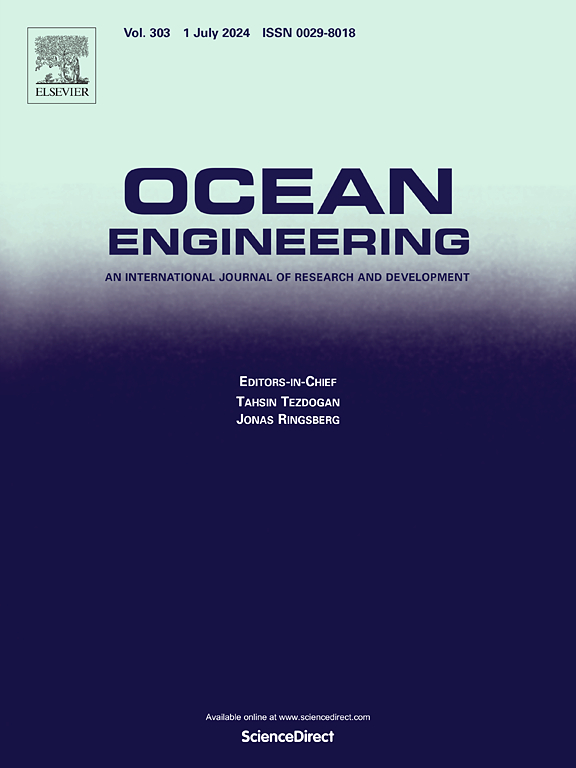日本散货船阻力与推进特性的尺度效应
IF 5.5
2区 工程技术
Q1 ENGINEERING, CIVIL
引用次数: 0
摘要
通过阻力和自推进试验的数值模拟,研究了尺度效应对日本散货船推进特性的影响。数学模型基于reynolds -average Navier Stokes方程,控制方程的闭包采用SST k−ω湍流模型。采用体力螺旋桨法对旋转螺旋桨的影响进行了建模。系统地进行了从模型到全尺寸的四个尺度的数值模拟,并进行了广泛的速度范围。在模型尺度下使用虚拟流体进行了额外的数值模拟,以满足Froude和Reynolds相似度。进行了一项验证研究以评估数值不确定性,同时使用可用的实验数据进行了一项验证研究。得到的数值结果可以详细研究尺度效应对船舶阻力和推进特性的影响。在名义尾迹积分值和无量纲轴向速度径向分布上观察到显著的尺度效应。此外,尾流分数和船体效率受到尺度效应的影响,而推力扣除分数和准推进效率受到尺度效应的影响最小。用虚流体法得到的数值结果与用真实流体进行的满量程数值结果之间的差异在数值不确定性范围内。本文章由计算机程序翻译,如有差异,请以英文原文为准。
Scale effects on the resistance and propulsion characteristics of the Japan Bulk Carrier
The scale effects on the propulsion characteristics of the Japan Bulk Carrier were investigated using numerical simulations of resistance and self-propulsion tests. The mathematical model was based on Reynolds-averaged Navier Stokes equations and for the closure of the governing equations, the SST turbulence model was used. The effects of the rotating propeller were modelled using the body force propeller method. Numerical simulations were systematically conducted across four scales ranging from model to full scale and for a wide range of speeds. Additional numerical simulations were performed at model scale with virtual fluid to satisfy both Froude and Reynolds similarity. A verification study was performed to assess numerical uncertainties, while a validation study was conducted using available experimental data. The obtained numerical results enable a detailed investigation of scale effects on ship resistance and propulsion characteristics. Significant scale effects were observed on the integral value of the nominal wake and the radial distribution of the non-dimensional axial velocity. Additionally, scale effects were shown on the wake fraction and hull efficiency, whereas the scale effects on the thrust deduction fraction and the quasi-propulsive efficiency were minimal. The differences between the numerical results obtained using the virtual fluid method and those at full scale with real fluid fall within the bounds of numerical uncertainty.
求助全文
通过发布文献求助,成功后即可免费获取论文全文。
去求助
来源期刊

Ocean Engineering
工程技术-工程:大洋
CiteScore
7.30
自引率
34.00%
发文量
2379
审稿时长
8.1 months
期刊介绍:
Ocean Engineering provides a medium for the publication of original research and development work in the field of ocean engineering. Ocean Engineering seeks papers in the following topics.
 求助内容:
求助内容: 应助结果提醒方式:
应助结果提醒方式:


